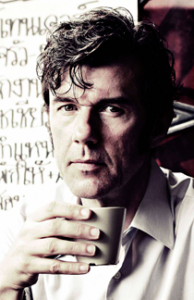 Did you know there are three levels of happiness? After gauging the audience on a scale from 1 (I feel shitty) to 10 (I love life) creator of The Happy Show, Stefan Sagmeister of @SagmeisterWalsh kicked off FITC 2014 by telling us the difference.
Did you know there are three levels of happiness? After gauging the audience on a scale from 1 (I feel shitty) to 10 (I love life) creator of The Happy Show, Stefan Sagmeister of @SagmeisterWalsh kicked off FITC 2014 by telling us the difference.
- Level 1 happiness: The simple everyday pleasures that bring us joy.
-
Level 2 happiness: The things related to our well being that bring us satisfaction.
-
Level 3 happiness: Ways we fulfill our potential.
The three levels of happiness are independent of one another, so you can be happy with some parts of your life but not others.
Sagmeister’s The Happy Show exhibit (in cities like Paris, Philadelphia and Toronto) basically let people experience happiness and provided interesting tidbits of information.
Like did you know, it’s biologically impossible to experience passionate love for more than six months? Apparently if our bodies did, it would be toxic.
The exhibit evolved into Sagmeister’s documentary (launched by a Kickstarter campaign) now in the rough cut stage.
Like the exhibit, the film explores meditation, cognitive therapy and drugs as the three “most efficient paths to happiness” recommended by his psychological adviser.
In his research, Sagmeister also looked at presentism – being happy by the immediate and negativity bias, where it’s much easier for the negative stuff to reach the core of our brains than positive stuff.
|
What makes us unhappy? |
What makes us happy? |
|
|
Sagmeister had his own simple cure for happiness – do more of the things that you love and do less of the stuff you don’t like.
So what makes Sagmeister most happy?
-
Thinking about ideas and content freely – with the deadline far away
-
Travelling to new places
-
Using a wide variety of tools and techniques
-
Working on projects that matter to me
-
Having things come back from the printer done well
-
Getting feedback from people who see our work
-
Designing a project that feels partly brand new and partly familiar
-
Working without interruption on a single project
He also recommends The Happiness Hypothesis by Jonathan Haidt – the book on which his work is based.
With all that he’s learned about happiness Sagmeister admits he’s not very good with three of its contributors – thankfulness, sympathetic empathy and humility.
To help others with their own happiness, he encourages individuals to write down three things that work well each day. And he closed with a challenge to all attendees – do something gutsy.
After all “the ability to make things happen might be at the extreme top of what is needed by a designer,” said Sagmeister.
Diane Bégin @dibegin works at APEX and teaches at the University of Toronto School of Continuing Studies. She’s a geek for communications theory and blogs at wheretobegin.ca.
